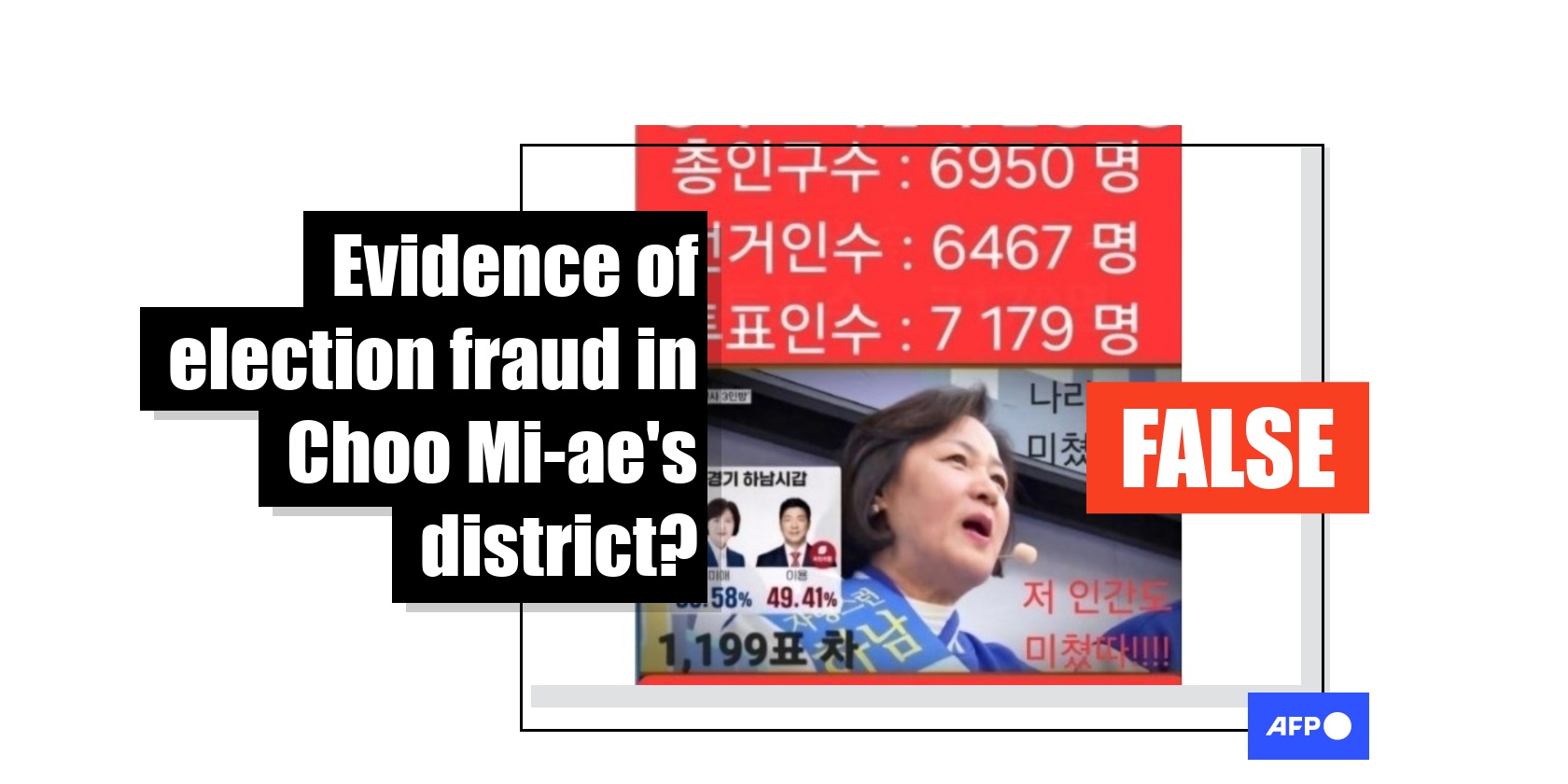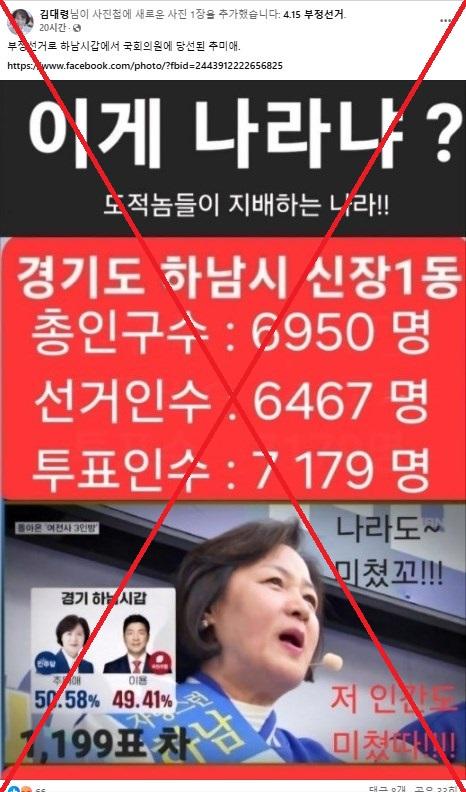
S. Korean population and ballot figures used to resurface baseless election fraud claims
- Published on June 19, 2025 at 10:46
- 2 min read
- By SHIM Kyu-Seok, AFP South Korea
Copyright © AFP 2017-2025. Any commercial use of this content requires a subscription. Click here to find out more.
"Choo Mi-ae was elected representative in Hanam-A district through voter fraud," declares the Korean-language caption of a graphic shared in a Facebook post on June 16, 2025.
Choo, a six-term Democratic Party lawmaker and former justice minister, was elected by a margin of 1,199 votes in the Hanam-A district during the April 2024 general election (archived link).
The post, however, questions the legitimacy of the vote.
Superimposed text on the graphic reads: "You call this a country? A nation ruled by bandits!"
It then lists purported voting figures from the district's Shinjang 1-dong neighbourhood: "Total population: 6,950. Number of eligible voters: 6,467. Number of votes cast: 7,179."

The same graphic alleging voter fraud in Choo's district circulated across social media, and has resurfaced since centre-left candidate Lee Jae-myung's resounding victory in South Korea's June 3 presidential election (archived link).
"The problem is that the [opposition] People Power Party chooses to ignore voter fraud, so what is the point of this evidence," read a comment on one of the posts.
Another said: "It is evident that Choo Mi-ae's election was fraudulent."
Official data from the South Korean government and the country's election watchdog, however, shows the figures used in the graphic are inaccurate.
Population and voting data
Information from the Ministry of Interior shows the total population of Shinjang 1-dong at the time of the April 2024 general election was 6,902 -- not 6,950 as claimed in the falsely shared graphic (archived link).
According to South Korea's National Election Commission (NEC), the number of eligible voters in Shinjang 1-dong during the April 2024 general election was 7,179 -- not 6,467 (archived link).
The NEC data also shows 4,719 votes were cast -- not 7,179.
"Even if the number of ballots cast had exceeded the population of the neighbourhood, that would not constitute evidence of fraud," an NEC spokesperson told AFP on June 17.
South Korea allows voters to cast their ballots outside their district of residence during early voting (archived link).
"This means that non-residents can legally vote in a different area from where they reside, causing the number of votes cast in the district to exceed the number of residents," the spokesperson said.
This misunderstanding has become a recurring theme in South Korean elections, especially among groups alleging electoral fraud.
The NEC issued a statement on June 1 in response to separate allegations of election fraud in Buan County in the North Jeolla province, saying the number of votes corresponds to the total number of electors who cast their votes at ballot stations in the county, "not just those who reside in the area" (archived link).
AFP has debunked multiple false claims alleging voter fraud in South Korean elections.
Is there content that you would like AFP to fact-check? Get in touch.
Contact us
